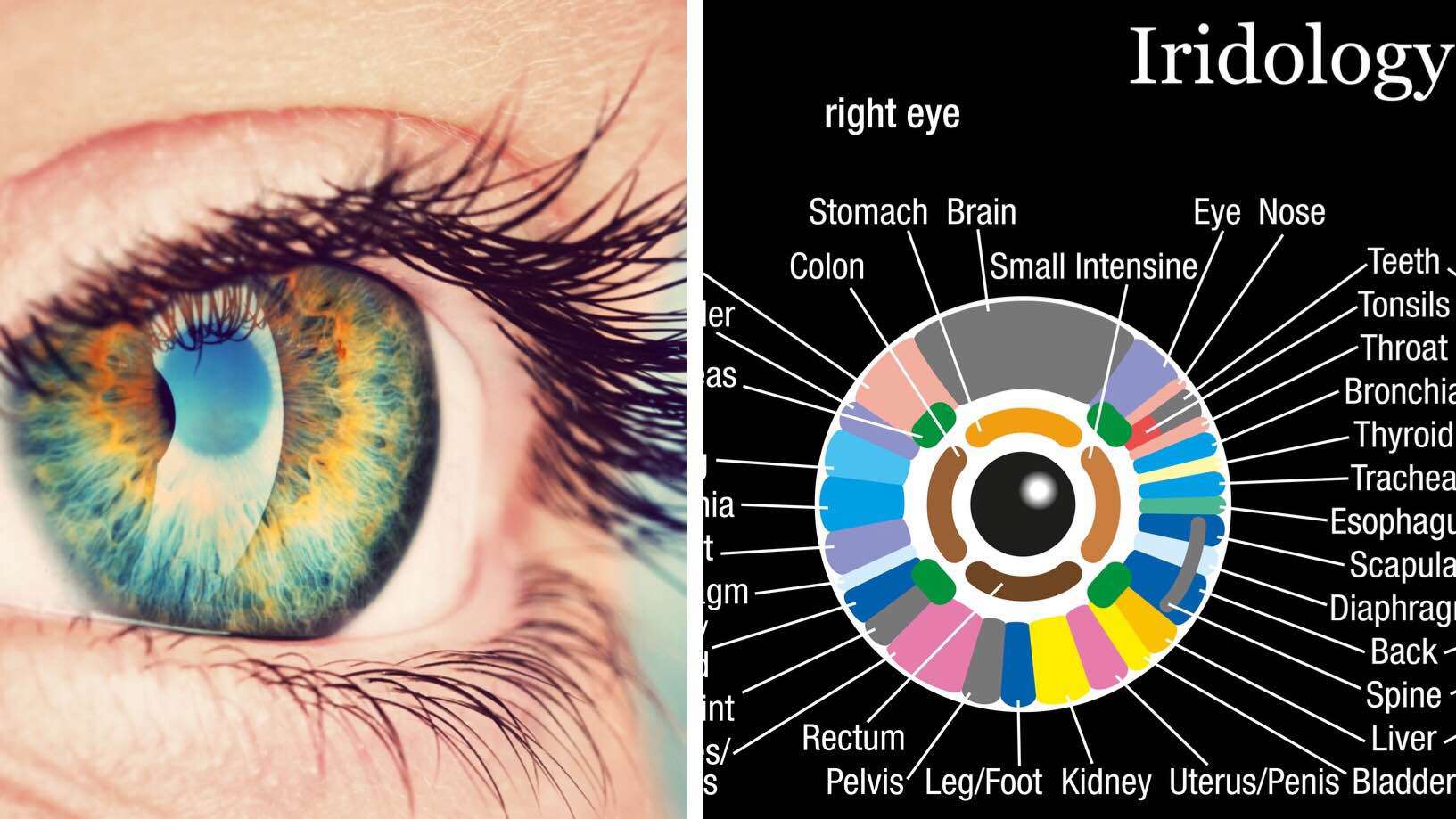Proponents of iridology claim that the iris of the eye can reveal a lot about a person’s emotional, mental, physical, and spiritual health. Practitioners of iridology mainly use the practice as a preventative tool, an early warning system. The practice can also be useful in the evaluation of the healing process and for discovering signs of eventual health. It is common for practitioners to use the principles of iridology to gauge their health status in a multitude of areas.
The basic foundational principles of iridology are as follows:
- The iris is an extension of the brain and consists of many thousands of nerve endings.
- Each organ connects to the iris via the nervous system.
- Every organ is encompasses a certain amount of space in either the left or right iris of the eye.
- The physical appearance of the iris (patterns, colors, etc.) are a manifestation of each organ’s health.
Iris: A flat, colored, ring-shaped membrane behind the cornea of the eye, with an adjustable circular opening (pupil) in the center. – Dictionary.com
What Does Your Iris Reveal About Your Health?
Related article: 5 Warning Signs Of Early Vision Loss
The iris itself is made up of very dense and straight lines that extend from the pupil to the outer rim of the eye. When these lines take on a shade similar to that of hardwood, vitality and recovery ability are believed to be strong. However, if these lines are loose and resemble softwood in color, it is believed that underlying health is weak.
It is also possible for these normally-fine lines of the iris to become distorted. When this happens, it is common for these lines to separate further from one-another. Called “markings,” these distorted lines can mean weak blood circulation and damage and/or poor health of a particular organ.
Color changes of the iris may also reveal potential health problems. For example, brown discolorations in blue or green eyes may indicate digestive system deterioration, weakness of the gall bladder, and/or liver problems.
When color of the iris changes from a bluish to brownish shade, the body may be having an allergic reaction of some kind. People with allergies involving the skin, respiratory system and digestive system commonly experience a similar color change.
White markings within the iris may indicate that an organ is inflamed, while grey or brown markings may indicate that an organ requires some type of strengthening or stimulation. It is common for organs that are inflamed to becoming chronically weak, during which time the white of the iris will take on a shade of grey. It is believed that the darker the grey area, the weaker the organ(s). Conversely, when an organ begins to heal, the grey coloration will convert back to its original white color.
Here are some of the more-common iridology discoveries:
- Pupil reflex: Non-contraction of the pupil when exposed to bright light may indicate dullened reflexes, an overstimulated nervous system, or weakened adrenal glands.
- Nerve rings: Circles or arcs of a white color may appear on the outer part of the iris. The appearance of these circles/arcs may indicate irritation or hypersensitivity of the nervous system.
- Stomach area discoloration: When healthy, the stomach area of the iris is not visible. However, stomach irritation will generally result in the area bordering to the pupil turning white. Brown coloration of this area may indicate chronic stomach problems.
- Intestinal area discoloration: A white intestinal area of the iris can indicate inflammation, ulcer or irritation. In this case, practitioners will often avoid certain products, including: gluten, spices, acidic foods and dairy products.
- White outer ring: A thick, white ring on the iris’s outer parts may indicate excessive salt intake. So avoid sodium, drink plenty of water and ingest plenty of potassium, magnesium, and vitamin D. Supplementation of these vital minerals is also acceptable.
- Dark outer ring: A dark ring at the outer part of the iris, called the “scurf rim.” It may indicate unhealthy skin. It is also common for this symptom to indicate poor lung and/or kidney circulation.












 Community
Community

